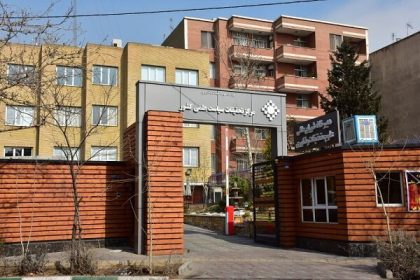Ethereum’s decentralized blockchain enables the creation of smart contracts, decentralized applications (dApps), and tokens. Ethereum is one of the largest and most popular blockchain networks with thousands of nodes worldwide. The structure and distribution of nodes plays an important role in the performance, security and scalability of the Ethereum network. Nodes allow users to interact with the Ethereum network through transactions or participation in the performance of smart contracts; Therefore, an important role in Ethereum analysis have.
What is Ethereum?
Ethereum is an open-source, decentralized blockchain that enables developers to create their own smart contracts, applications, and tokens. Launched in 2015, Ethereum (ETH) is the second largest cryptocurrency by market capitalization after Bitcoin.
What is a knot?
Nodes are essential components of a blockchain network that distribute and validate transactions across the network. They store and maintain a copy of the blockchain; A decentralized ledger of all transactions ever made on the network. Nodes play an important role in ensuring security, reliability and efficiency in the Ethereum Proof of Stake network.
PoS nodes confirm transactions and create new blocks based on the amount of cryptocurrency they hold, rather than computing power. PoS nodes are more energy efficient and cost effective than PoW nodes. This issue in the analysis of Ethereum will lead to greater scalability of the network and ease of transaction in it. You can click here to view Ethereum analysis.
1. Complete nodes
Full nodes are the most comprehensive type of nodes in the Ethereum network. They store a complete copy of the blockchain, verify transactions, and distribute them among light nodes. They also participate in consensus to ensure that the network works well.
Full nodes are the most active participants in the Ethereum network; Because they validate and transfer transactions. However, they require a significant amount of resources such as storage space and bandwidth to operate.
Full nodes are the most secure option for the Ethereum network because they independently confirm transactions to ensure the complete integrity of the blockchain. However, high resource requirements may limit the number of full nodes in the network and open the door to potential security breaches.
2. Light knots
Light nodes, also known as clients, are a lightweight version of full nodes that do not store the full blockchain. They rely on full nodes to retrieve and validate transactions. They work with devices with limited storage space and processing power, such as smartphones and IoT devices.
Light nodes require less resources; But they sacrifice a level of validation for the speed of transaction confirmation. They are less secure because they slow down the validation process. But for individuals and small businesses, they are quite affordable.
3. Archive nodes
Archive nodes store the complete blockchain history including all past transactions and smart contract states. They are needed for in-depth analysis and research purposes, but will not be necessary for regular network operations.
4. Super nodes
Super nodes are similar to full nodes; But they have more important resources and provide additional services such as monitoring and governance to the network; This will lead to a better and smoother implementation of the network in Ethereum analysis. Super nodes have a higher level of security than full nodes. But the concentration of their resources can be a potential risk if they are targeted by a hacker attack.
Global distribution of Ethereum nodes
Ethereum nodes are globally distributed, with most nodes located in North America, Europe, and Asia. Of course, there are nodes in other regions such as South America, Africa and Oceania.
Ethereum nodes are not evenly distributed across regions. For example, the majority of nodes are located in the United States, followed by China and Germany. This focus can be attributed to factors such as infrastructure, regulation and user acceptance.
Several factors such as regulatory policies, network infrastructure, Internet connectivity and user acceptance affect the distribution of nodes. Therefore, countries with favorable regulatory frameworks for digital currencies and strong network infrastructure have more nodes. Additionally, areas with a higher density of users proficient in blockchain technology and digital currencies will also have more nodes.

Privacy in Ethereum Node Distribution
Improper distribution of nodes in Ethereum can be a risk to the security and privacy of users and investors. The concentration of nodes can make the Ethereum network vulnerable to attacks such as DDoS and Sybil attacks. These types of attacks can lead to loss of trust, reduced network participation, and significant financial losses. If the distribution of nodes is not balanced, it raises the need to continuously monitor and update the locations and configurations of nodes.
The structure and distribution of nodes in the Ethereum network will continue to shape the future of the platform. Node distribution is an important factor in Ethereum scalability, which refers to the network’s ability to handle increased transaction volume. The structure and distribution of nodes can affect the speed of transaction processing as well as the overall capacity of the network. Improving node distribution can help increase network scalability and reduce the risk of resource congestion.
Emerging trends in Ethereum node distribution are driven by efforts to increase decentralization and diversity of node ownership. Additionally, as Ethereum moves towards a proof-of-stake consensus, the emergence of specialized nodes is expected to increase.
Conclusion
The structure and distribution of nodes in Ethereum has important implications for Ethereum’s security, privacy, scalability, and analytics. Promoting diversity in node ownership and their distribution locations can increase network security and reduce the risk of attacks. Additionally, emerging trends in node distribution, such as specialized nodes and the move toward proof-of-stake consensus, present unique challenges and opportunities for network development.
RCO NEWS

















